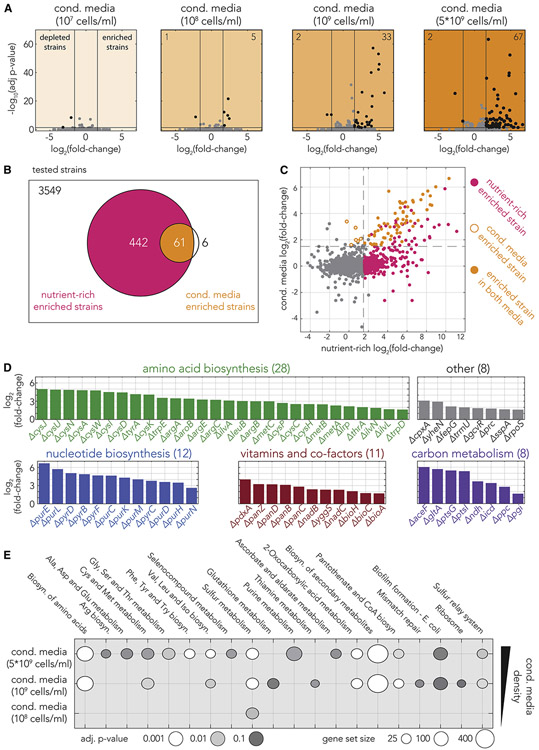Figure 2. Knockout strains dysfunctional in biosynthesis of amino-acids, nucleotides, vitamins and co-factors, and central carbon metabolism benefit from condition media.
(A) Analysis of fold-change in strain representation and the statistical significance across the four screen conditions. The number of significantly enriched or depleted strains are shown on the upper corners (the vertical and horizontal black lines mark the fold-change and p-value cutoffs we used). The vast majority of hits were enriched, rather than depleted, in conditioned media. The total number of hits increased with conditioned media filtered from denser cultures. (B) Only a subset of auxotrophs that were enriched on nutrient-rich media also benefited from conditioned media. The Venn diagram shows the overlap between hits found to be enriched on nutrient-rich media (pink) and those found to be enriched on conditioned-media (orange). (C) A comparison of fold-change in knockout strain frequency on nutrient-rich media and on conditioned media. The fold-enrichment of common hits is correlated in the two screens (colors as in B). (D) The conditioned media enriched knockout strains are associated with specific metabolic functions. The colored bars show the fold-enrichment of hit strains in conditioned media filtered from the densest culture. 59 of 67 of the strains can be annotated as dysfunctional in biosynthesis of amino acids (green), nucleotides (blue), vitamins and co-factors (red), and central carbon metabolism (purple). Eight of the enriched strains belong to other biological categories (gray). (E) Analysis of KEGG pathway enrichment across all conditions. The circle plots show the number of genes belonging to the enriched pathway and gray-scale color marks the statistical significance.

